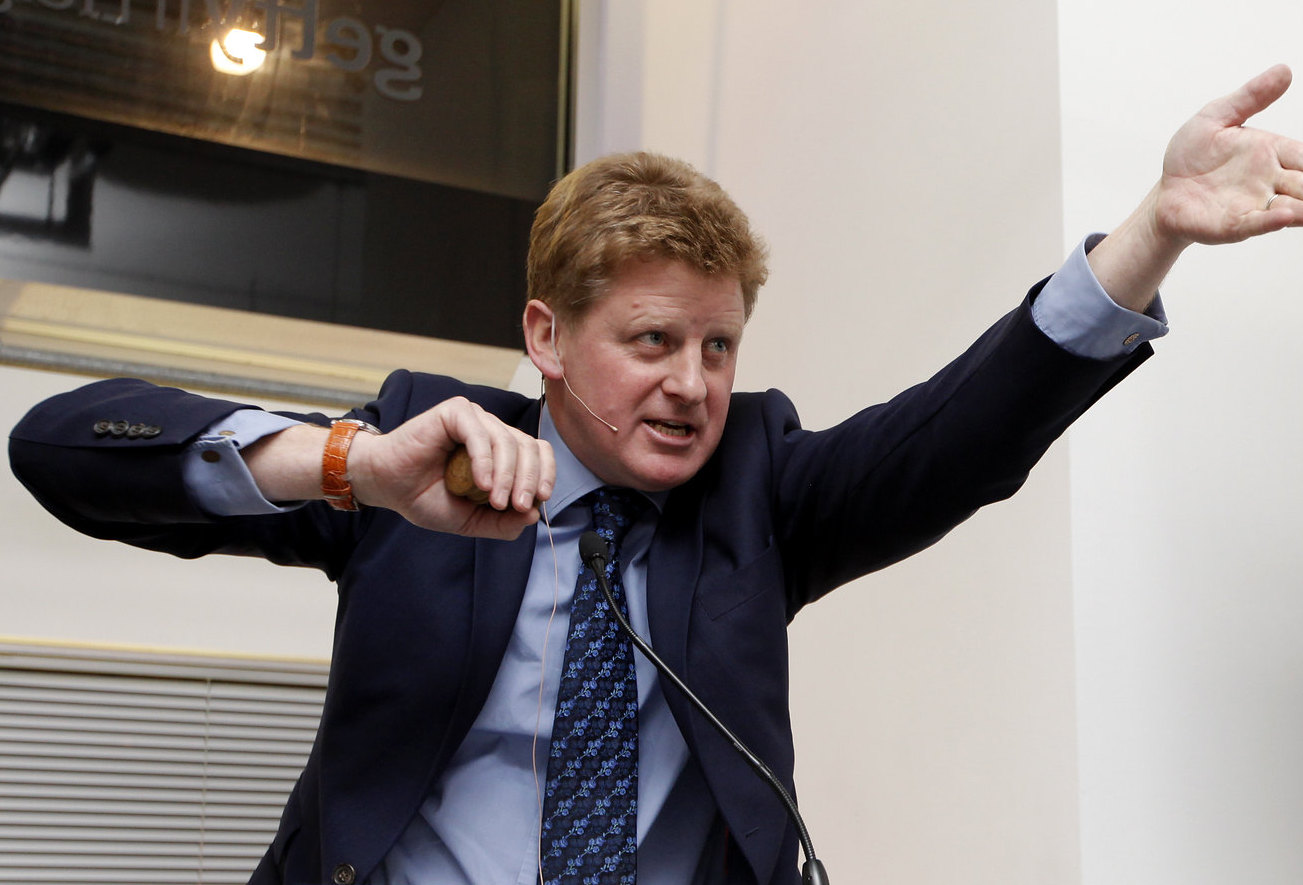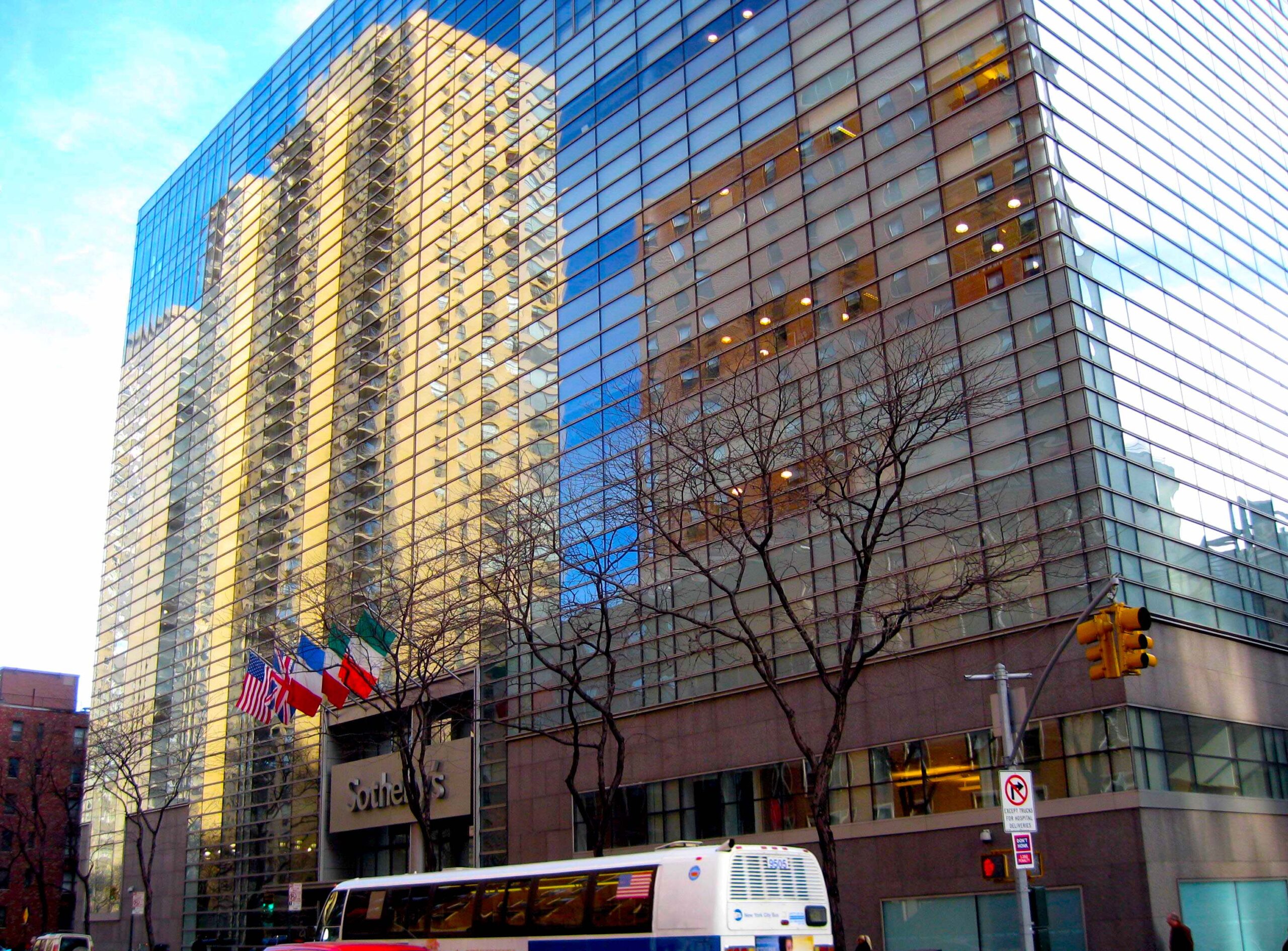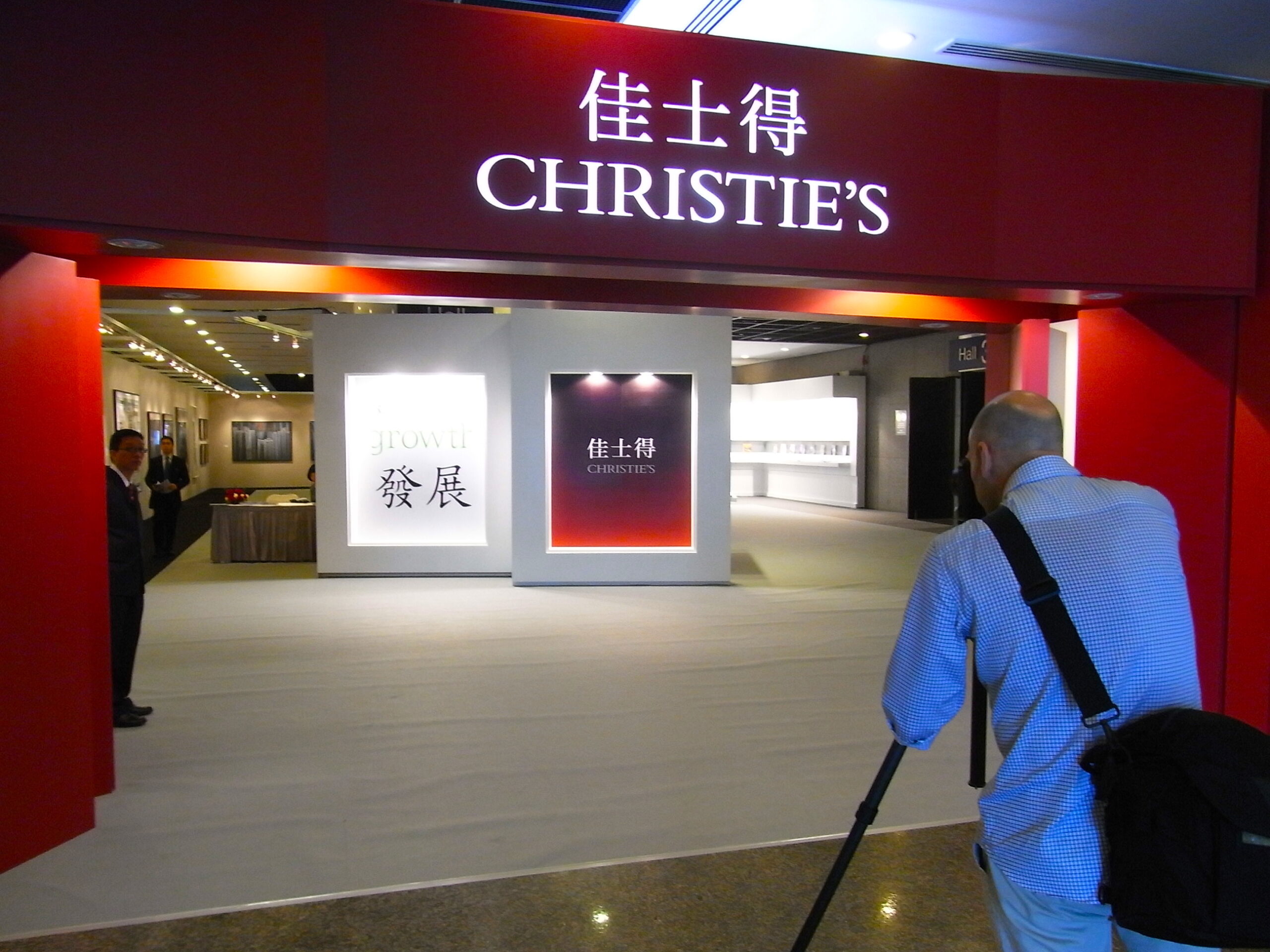Fine art has never been more financially lucrative — or less central to U.S. culture, writes Sam Pizzigati.

Sotheby auctioneer Adrian Biddell in 2013. (Financial Times, Flickr)
By Sam Pizzigati
Inequality.org
 Vermeer. Velázquez. Kahlo. These names mean anything to you? They mean plenty to the world’s super rich. For the extraordinarily wealthy, the artworks of Vermeer, Velázquez and Kahlo — and the many other great painters who have so shaped how we visualize the world — have become much more than cultural touchstones worthy of admiration. For these rich and their money managers, humanity’s artistic patrimony has become an “asset class.”
Vermeer. Velázquez. Kahlo. These names mean anything to you? They mean plenty to the world’s super rich. For the extraordinarily wealthy, the artworks of Vermeer, Velázquez and Kahlo — and the many other great painters who have so shaped how we visualize the world — have become much more than cultural touchstones worthy of admiration. For these rich and their money managers, humanity’s artistic patrimony has become an “asset class.”
An extremely lucrative asset class, as high-end art auctions this month have once again reminded us. Earlier this month, 35 masterworks from the collection of real estate developer Harry Macklowe and his former wife Linda came up for sale at Sotheby’s. Experts had earlier valued the works at some $400 million. Bidders had something else in mind. Their enthusiasm jumped the final cost of the auctioned art to a whopping $676.1 million.
Only four days earlier, at a Christie’s auction, a collection of Impressionist art that the late Texas oilman Edwin Cox had amassed went for $332 million, well above the $268 million that art experts had predicted.
This past Tuesday, another stunner: A self-portrait by the great Mexican artist Frida Kahlo set “an auction benchmark for the most expensive artwork by a Latin American artist.” The eventual auction sale price: $34.9 million. The previous record? That had been the mere $9.76 million spent three years ago on a painting by Diego Rivera, Kahlo’s one-time significant other.
These sorts of price-tags have rocketed the world of fine art into a visual space totally foreign to the lives that the vast majority of us are leading. We go about our daily existences enveloped by commercial kitsch. The super wealthy live amid visual splendor — and get to portray themselves, in the process, as selfless benefactors of fine art, guardians of our world’s finest artistic achievements.

Sotheby’s New York headquarters. (Jim Henderson, Wikimeidia Commons)
Few conventional observers today can imagine an art world without the exceedingly wealthy. Rich people dominate the governance boards of the world’s great museums. They even occasionally open up their own museums. Without their patronage, the story goes, our fine art heritage would simply wither away.
But this mega-rich-as-our-cultural-salvation narrative has everything upside down. The wealthy of the world aren’t saving art’s future. They’re choking it, shrinking both the potential audience for fine art and the pool of fine art creators.
How could that be? Let’s begin with a simple, unarguable observation: Great artists have in the past come regularly from humble backgrounds. Any society that truly valued fine art would be diligently working to identify and nurture artistic talent, wherever that talent might lie.
Art Education in Decline
In the United States today, we’re doing precious little of any of that. Art education in America’s schools has been fading away on a steady decline that’s now stretched for over three decades, concludes a newly released blue-ribbon commission report from the American Academy of Arts and Sciences.
That decline has hit the nation’s most at-risk kids the hardest. Art education opportunities for “children whose parents have less than a high school education,” the American Academy’s Commission on the Arts notes, have dropped 77 percent since 1982.
In New York City, spending on art supplies and equipment dropped 84 percent between 2006 and 2013, and over 40 percent of schools in the city’s low-income areas, at the end of that time frame, didn’t have a single state-certified art teacher in them.

Recess at MS 45 in the Bronx, 2012. (Matt Green, Flickr, CC BY-NC-SA 2.0)
In 2017, education researcher Ryan Shaw did a deep dive into arts education in the Lansing, Michigan, schools. He found elementary schools that “offered a single music and art class once every eight weeks.”
In Lansing, Shaw points out, budget shortfalls had led to stiff staff cutbacks. Such cuts have become a somewhat chronic fixture on America’s educational scene, ever since the Reagan Revolution gave privileged public policy status to cutting taxes on America’s rich.
Some of those rich have, in turn, put chunks of their considerable tax savings into a “philanthropic” push for “charter schools and other market-based approaches to school improvement.” These moves, notes Sarah Lahm of the Independent Media Institute’s Our Schools project, have only served to squeeze local public school budgets even more. And art education has ended up among the biggest losers.
Storage Vaults
But aren’t all those museums the rich donate to bringing art to the people? In fact, these days, the rich aren’t taking art to the people. They’re taking art from the people and plopping it into storage vaults in global “free port” zones that the world’s wealthy use to dodge sales taxes on their multi-million artwork purchases.
“Nothing illustrates the art-as-bullion approach to contemporary collecting habits more than the proliferation of warehouses,” notes a New York Times analysis, “where masterpieces are increasingly being tucked away by owners more interested in seeing them appreciate than hanging on walls.”
In one “free port” zone outside Switzerland’s downtown Geneva, “a compound of blocky gray and vanilla warehouses surrounded by train tracks, roads, and a barbed-wire fence” at one point housed some 1.2 million art pieces, according to a Swiss government audit. Times reporters Graham Bowley and Doreen Carvajal have described these bleak warehouses as “the kind of place where beauty goes to die.”

Christie’s preview exhibition in Hong Kong, 2012. (Sunbeamprowce, CC BY-SA 3.0, Wikimedia Commons)
But the rich didn’t buy the artworks in those warehouses for their “beauty.” They bought them as investments with plenty of “appreciation” upside. And artworks can “appreciate” quite nicely behind the fire-resistant walls and climate-controlled environments of the world’s fine art warehouses.
And what about those art museums where fine art, at least in theory, remains accessible to rich and poor alike? That accessibility has shrunk mightily as museums throughout the United States have deep-sized their longstanding free admission policies. By 2018, Art News calculates, only a third of the nation’s 240 major art museums were offering no-charge access.
Among the admission-fee chargers: New York City’s world-renowned Metropolitan Museum of Art. In years gone by, the artist Charles Petersen has noted, the Met and other institutions that defined New York “hoped to lead the world” not just in the ambition of their programs and holdings but in how much they contributed to their city’s “democratic culture.” As late as 1970, not one of the New York museums in a city-owned facility charged anyone for admission. The Met now charges as much as $25 for entry.
For billionaire Metropolitan Museum of Art trustees like David Koch, Petersen adds, the Met’s 2018 decision that made admission fees mandatory for many visitors amounted to a necessary step in their “long march” to privatize public goods. At the time of the admission move, Koch and his fellow Met trustees had a combined net worth over $500 billion.
Sam Pizzigati co-edits Inequality.org. His latest books include The Case for a Maximum Wage and The Rich Don’t Always Win: The Forgotten Triumph over Plutocracy that Created the American Middle Class, 1900-1970. Follow him at @Too_Much_Online.
This article is from Inequality.org.
The views expressed are solely those of the author and may or may not reflect those of Consortium News.

The most contemporary favorite art amongst the rich is art critical of art except for art in favor of abolishing art because it’s not about social improvement. It is a vicious strain of philistinism that makes the rich feel good.
The Death Of The Artist: How Creators Are Struggling To Survive In The Age Of Billionaires And Big Tech, by William Deresiewicz
Art should be freely available for everybody like air, water and bread.
Each puiple should have the chance to paint or be creative in any other way at least once a week.
They are trying to destroy our souls.
Art has ben strangled out of America since the 60’s when Warhol and Henry Geldzahler connived to replace it with money. It began with money laundering via dope dealers and slowly moved into the high tide of investors who know little or les about art, but love what they can promote.
Oddly enough, the same strangulation has occurred in the cinema , in writing, even in sports, money reigns and the few get rich, both creators and investors. In the art world, quiet brilliance is not enough. Yet, nowhere but in the painting world have the banks and funds carried art investments to such a grotesque mockery of aesthetics, due to the auction houses and a few dealers.
But America has not been a center of high art on a world level, ever. And note that the huge sums are still reserved for the non-American painters.
Sadly, I can verify the reference to Art Museums being less available to all. As a yougster I spent many a Saturday at the Art Institute ( Chicago)……while my friend attended an art class sponsored by the Institute. I have taken my grandchildren …who can’t enjoy popping in ….given the high admission. Thank goodness I have my good memories….and can share them with others…….unlike repositories of Art locked away in buildings awaiting signals of surging value.